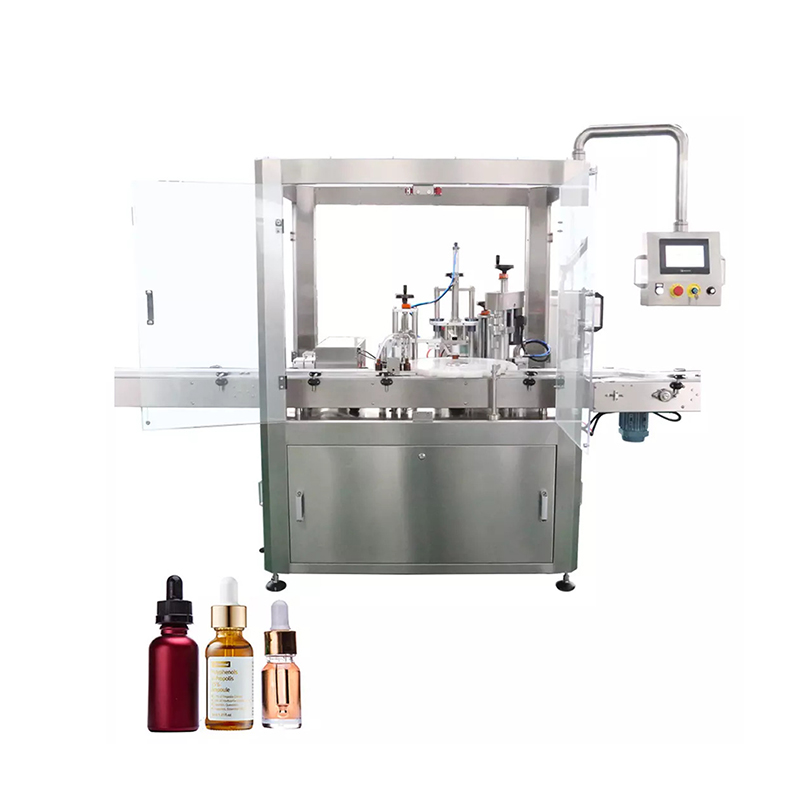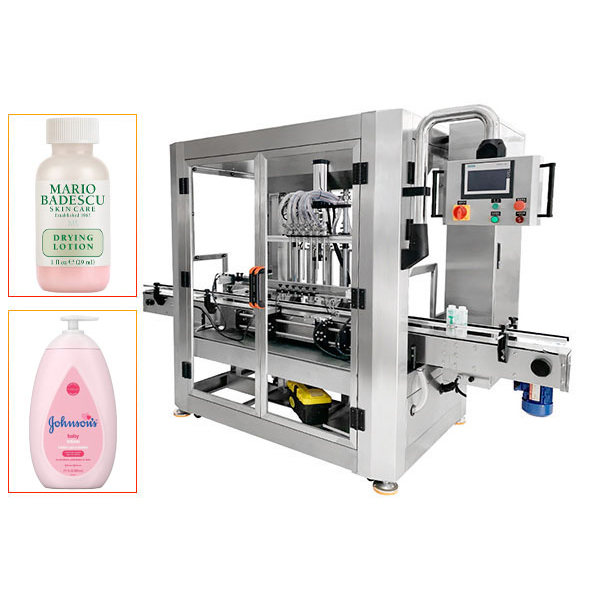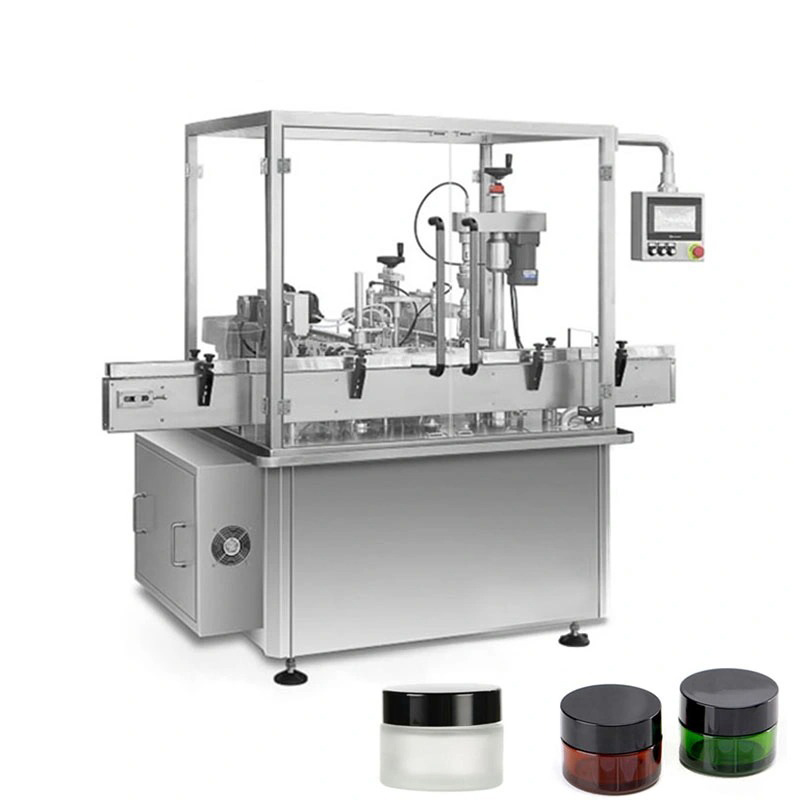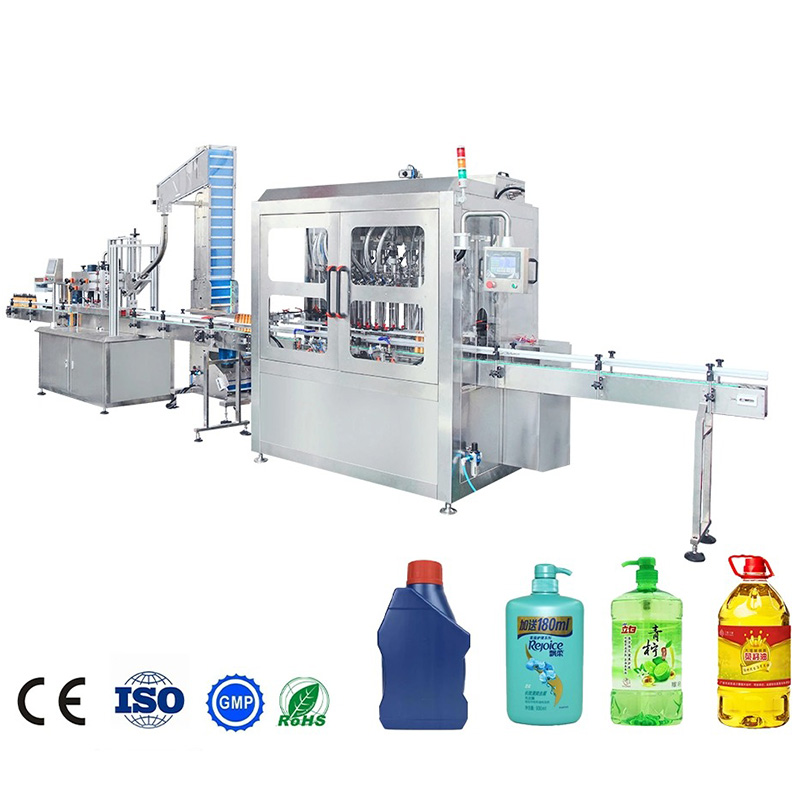What is cosmetics filling machine?
A cosmetics filling machine is a type of equipment used in the cosmetics industry to accurately and efficiently fill containers with products such as lotions, creams, gels, and other liquids. These machines are designed to handle a wide range of container sizes and shapes and can be customized to accommodate specific product viscosities and filling requirements. They typically consist of a series of tubes, pumps, and valves that dispense the product into the containers, as well as sensors and control systems to ensure precise filling and minimize waste. Some cosmetics filling machines also have features such as capping and labeling capabilities, as well as the ability to handle multiple products and packaging types.
What are the different types of cosmetics filling machines available?
There are several different types of cosmetics filling machines available, including:
Gravity fillers:
These machines use gravity to dispense product into the container. They are generally used for low-viscosity products and are simple and cost-effective to operate.
Piston fillers:
These machines use a piston to dispense product into the container. They are suitable for a wide range of viscosities and can handle both liquids and semi-solids.
Time gravity fillers:
These machines use time and gravity to dispense product into the container. They are accurate and suitable for a wide range of viscosities.
Net weight fillers:
These machines use a load cell to weigh the product as it is being dispensed into the container. They are highly accurate and suitable for products that require precise filling.
Peristaltic fillers:
These machines use a flexible hose to dispense product into the container. They are suitable for a wide range of viscosities and can handle both liquids and semi-solids.
Volumetric fillers:
These machines dispense product into the container based on volume. They are suitable for a wide range of viscosities and can handle both liquids and semi-solids.
Auger fillers:
These machines use an auger to dispense product into the container. They are suitable for products with high viscosities and are commonly used for filling products such as lotions and creams.
Pump fillers:
These machines use a pump to dispense product into the container. They are suitable for a wide range of viscosities and can handle both liquids and semi-solids.
Vacuum fillers:
These machines use a vacuum to dispense product into the container. They are suitable for products with high viscosities and are commonly used for filling products such as gels and pastes.
Inline fillers:
These machines are designed to fill containers as they move along a production line. They are suitable for high-volume production and can handle a wide range of container sizes and shapes.
How does a cosmetics filling machine work?
The specific way that a cosmetics filling machine works will depend on the type of machine and the product being filled. However, most cosmetics filling machines follow a similar basic process:
Preparation:
The machine is set up with the appropriate filling equipment, such as tubes, pumps, or valves, and the product is prepared for filling.
Containers:
The containers to be filled are placed in a designated area on the machine, either manually or by an automated system.
Filling:
The product is dispensed into the containers using the appropriate filling equipment. This may involve using gravity, a piston, a pump, or some other method to deliver the product.
Control:
Sensors and control systems monitor the filling process to ensure precise filling and minimize waste.
Capping and labeling:
Some cosmetics filling machines also have the capability to cap and label the filled containers.
Packaging:
The filled and capped containers may be packaged for distribution or shipped directly to customers.
Overall, cosmetics filling machines are designed to be fast, accurate, and efficient, and are an essential part of the cosmetics manufacturing process.
How accurate are cosmetics filling machines in terms of filling volume?
The accuracy of cosmetics filling machines in terms of filling volume can vary depending on the type of machine and the specific product being filled. Some cosmetics filling machines, such as net weight fillers and volumetric fillers, are highly accurate and can achieve filling tolerances of within 1% or less. Others, such as gravity fillers and time gravity fillers, may have slightly higher tolerances, typically within 2-3%.
Accuracy can also be affected by factors such as the viscosity of the product, the size and shape of the container, and the speed of the filling process. Some machines may be more accurate at slower filling speeds, while others may be more accurate at higher speeds.
Overall, the accuracy of cosmetics filling machines can be quite high, and most are able to deliver the desired volume of product with a high degree of precision. However, it is important to carefully evaluate the filling requirements of a particular product and select a machine that is capable of meeting those requirements.
Can cosmetics filling machines handle different types of viscosities and textures?
Yes, many cosmetics filling machines are designed to handle a wide range of viscosities and textures. Some machines, such as piston fillers and peristaltic fillers, are suitable for a wide range of products, including both liquids and semi-solids. Others, such as auger fillers and vacuum fillers, are specifically designed for products with high viscosities, such as creams, gels, and pastes.
The ability of a cosmetics filling machine to handle different types of viscosities and textures will depend on the specific design of the machine and the filling equipment it uses. Some machines may have adjustable filling speeds or pressure settings to accommodate different viscosities, while others may require the use of different filling equipment or modifications to the machine to handle different products.
Overall, it is important to carefully evaluate the viscosity and texture of a particular product and select a cosmetics filling machine that is capable of handling those characteristics effectively.
How much does a cosmetics filling machine cost?
The cost of a cosmetics filling machine can vary widely depending on the type of machine, its size and capacity, and its features and capabilities. Some small, simple machines may cost a few thousand dollars, while larger, more complex machines can cost hundreds of thousands of dollars or more.
Factors that can influence the cost of a cosmetics filling machine include:
Type of machine:
Different types of cosmetics filling machines, such as gravity fillers, piston fillers, and volumetric fillers, can have different price points.
Size and capacity:
Larger, higher-capacity machines will generally be more expensive than smaller, lower-capacity machines.
Features and capabilities:
Cosmetics filling machines with additional features and capabilities, such as the ability to handle multiple products or packaging types, or the ability to cap and label containers, will generally be more expensive.
Brand and supplier:
The brand and supplier of the cosmetics filling machine can also influence the price. Some brands and suppliers may offer more expensive machines with higher-quality components and features, while others may offer more affordable options.
Overall, it is important to carefully evaluate the specific needs and requirements of a cosmetics filling operation and select a machine that is appropriately sized and equipped to meet those needs. This will help ensure the machine is effective and efficient, and will help to minimize costs in the long run.
Can cosmetics filling machines be customized to meet specific needs?
Yes, many cosmetics filling machines can be customized to meet specific needs and requirements. This can involve modifying the machine to accommodate specific container sizes and shapes, adding additional features or capabilities, or adapting the machine to handle specific products or filling requirements.
Some customization options for cosmetics filling machines may include:
Container handling:
Modifications to the machine’s container handling system can allow it to accommodate different sizes and shapes of containers.
Filling equipment:
Different types of filling equipment, such as pumps, valves, or nozzles, can be used to handle different viscosities and textures of products.
Control systems:
Customized control systems can be used to ensure precise filling and minimize waste.
Capping and labeling:
Additional capping and labeling equipment can be added to the machine to enable it to cap and label containers.
Multiple products:
Some cosmetics filling machines can be adapted to handle multiple products, either simultaneously or in a sequential filling process.
Overall, customization can help to tailor a cosmetics filling machine to the specific needs and requirements of a particular operation, and can help to ensure that the machine is effective and efficient. It is important to carefully evaluate the specific needs of a cosmetics filling operation and work with a manufacturer or supplier to determine the best customization options.
What are the safety considerations when using a cosmetics filling machine?
There are several safety considerations to keep in mind when using a cosmetics filling machine:
Training:
It is important for all operators of the cosmetics filling machine to be properly trained in its operation and maintenance, including any safety procedures.
Protective equipment:
Operators should wear appropriate protective equipment, such as gloves and eye protection, to minimize the risk of injury.
Safety guards:
The cosmetics filling machine should be equipped with safety guards to protect operators from moving parts and to prevent access to hazardous areas.
Emergency shutdown:
The machine should have an emergency shutdown system in place to allow for quick and safe shutdown in the event of an emergency.
Maintenance:
Regular maintenance of the cosmetics filling machine is important to ensure it is operating safely and efficiently.
Safety features:
Some cosmetics filling machines may have additional safety features, such as alarms or interlocks, to alert operators to potential hazards.
Overall, it is important to follow all safety procedures and guidelines when using a cosmetics filling machine to minimize the risk of injury and ensure a safe working environment.
How long does it take to set up and start using a cosmetics filling machine?
The time it takes to set up and start using a cosmetics filling machine will depend on the specific machine and the complexity of the setup process. Some factors that can influence the setup time include:
Type of machine:
Different types of cosmetics filling machines may have different setup requirements.
Size and capacity:
Larger, higher-capacity machines may take longer to set up than smaller, lower-capacity machines.
Features and capabilities:
Machines with additional features and capabilities, such as the ability to handle multiple products or packaging types, may take longer to set up.
Installation and assembly:
Some machines may require installation and assembly, which can take additional time.
Training:
Operators will need to be trained on the operation and maintenance of the cosmetics filling machine, which can also take some time.
In general, it is important to allow sufficient time for the setup and training process to ensure that the machine is set up correctly and that operators are properly trained in its use. This will help to ensure the machine is effective and efficient and will minimize the risk of downtime or other issues.
Is the cosmetics filling machine easy to operate?
The ease of operation of a cosmetics filling machine will depend on the specific machine and the complexity of the filling process. Some cosmetics filling machines are relatively simple to operate and may only require minimal training, while others may be more complex and require more extensive training.
In general, cosmetics filling machines are designed to be as user-friendly as possible, with clear controls and instructions, and are typically easy to operate once the operator has received the necessary training. However, it is important to carefully evaluate the specific needs and requirements of a cosmetics filling operation and select a machine that is appropriately sized and equipped to meet those needs. This will help ensure the machine is effective and efficient, and will minimize the risk of errors or other issues.
Is the cosmetics filling machine compliant with industry regulations and standards?
It is important to ensure that a cosmetics filling machine is compliant with relevant industry regulations and standards to ensure the safety and quality of the products being filled. Some of the regulations and standards that may apply to cosmetics filling machines include:
Good Manufacturing Practices (GMPs):
GMPs are guidelines that outline the minimum standards for the design, operation, and maintenance of manufacturing facilities, including cosmetics filling machines.
Food and Drug Administration (FDA) regulations:
In the United States, cosmetics filling machines may be subject to FDA regulations, including the Current Good Manufacturing Practice (cGMP) regulations for cosmetics.
International Organization for Standardization (ISO) standards:
ISO standards are international standards that cover a wide range of industries, including cosmetics. Some ISO standards that may be relevant to cosmetics filling machines include ISO 22716, which covers GMPs for cosmetics, and ISO 9001, which covers quality management systems.
It is important to carefully review the relevant regulations and standards and ensure that the cosmetics filling machine is in compliance. This will help to ensure the safety and quality of the products being filled and will minimize the risk of regulatory issues.




